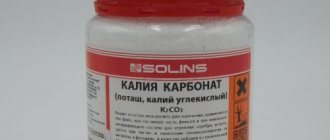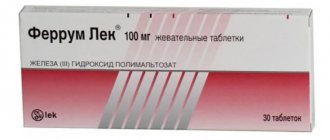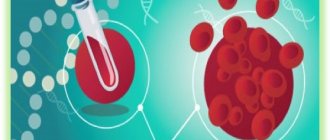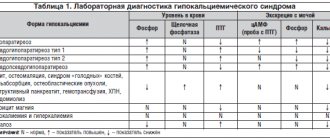Iron absorption
The body's daily need for iron in women is 1.5-2 mg.
In the gastrointestinal tract of a healthy person, only 10% of the total amount of iron eaten with food (1–2 mg) is absorbed. Improve iron absorption: ascorbic acid, fructose, citrates contained in fresh fruit juices, bananas, red beans, cauliflower. Reduce the absorption of iron from food: phosphates, tanning agents, complex polysaccharides, polyphenols, oxalates contained in cereals, eggs, cheese, tea. The effect of tea containing tannin is especially striking: when consumed, the absorption of iron is reduced sixfold (down to 2%). There are two types of iron in foods: heme (organic) and non-heme (inorganic). Heme iron is absorbed most completely. This iron is found in lean meats, fish, and poultry. The absorption of iron from animal products varies from 6% to 22%, while about 1% of iron is absorbed from plant foods. Fats (lard, butter and vegetable oil), soy protein, coffee, and dairy products inhibit the absorption of iron.
The human body contains about 3-4 g of iron, of which 70% is vital, active, 30% is deposited in tissues and 0.1% is transport. The bulk of iron is concentrated in hemoglobin (about 1500-3000 mg). In the depot (ferritin and hemosiderin of internal organs) there is from 500 to 1500 mg, in myoglobin and various respiratory enzymes - no more than 500 mg.
Increased content
Excessive concentration of Fe in the blood, as well as its deficiency, indicates existing pathologies. Since the mechanism for regulating the absorption of this microelement is quite reliable, an increased iron content indicates its breakdown or increased breakdown of red blood cells and the corresponding release of ions of this element.
Causes of elevated Fe levels in the body:
- Hemolytic, folate deficiency, aplastic, B12 anemia, thalassemia;
- Increased absorption in the small intestine when restrictions are violated (hemochromatosis);
- Hemosiderosis due to an overdose of drugs with a high content of Fe, or numerous blood transfusions;
- Lead poisoning, side effects of oral contraceptives, sideroachrestic anemia, which caused a failure of hematopoiesis in the bone marrow;
- Hepatitis of any etiology, liver necrosis, hepatopathy, acute cholecystitis.
When studying test results, it is important to take into account the patient’s possible use of oral iron supplements.
Causes of iron deficiency:
1.Increased need of the body for iron during pregnancy
During pregnancy, a woman’s body spends more than 1000 mg of iron. A woman’s need for iron during pregnancy can reach 15-18 mg/day, while outside of pregnancy the daily need is about 2 mg. This leads to a decrease in stored iron in all women by the end of pregnancy. It takes at least 2-3 years to restore iron reserves consumed during pregnancy, childbirth and breastfeeding.
2. Nutritional iron deficiency.
This type of iron deficiency occurs when there is insufficient supply of iron from food: vegetarianism, a passion for diets low in animal proteins. During pregnancy, a vegetarian diet is unacceptable.
- 3. Presence of a pathological background for the development of anemia
- use of intrauterine contraceptives (they increase menstrual blood loss);
- endometriosis
- uterine fibroids
- abnormal uterine bleeding;
- gynecological diseases accompanied by bleeding;
- heavy and prolonged menstruation;
- hypothyroidism and thyroid dysfunction;
- diseases of the gastrointestinal tract (peptic ulcer of the stomach and duodenum, erosive gastritis, nonspecific ulcerative colitis, etc.);
- diseases of the kidneys and urinary tract (chronic pyelonephritis, glomerulonephritis, etc.);
- multiple pregnancies and births (more than three) with an interval between births of less than two years;
- multiple births;
- pregnancy occurring during lactation;
- frequent abortions and spontaneous termination of pregnancy preceding this pregnancy;
- foci of chronic infection.
Features of the course of pregnancy in the early stages
- vomiting of pregnancy;
- bleeding.
- 5. Puberty and growth
- 6. Iron resorption deficiency
This type of anemia is caused by a decrease in the absorption zone of iron during gastritis, duodenitis, enteritis, resection of the stomach and large areas of the small intestine.
Normal level of iron in the body
Iron is found in the blood serum in connection with transferrin (25%), a protein that binds and transports it. To order a serum iron test, a reason is required - a low level of hemoglobin, usually detected as part of a general blood test.
During the day, the concentration of Fe in the body fluctuates:
- 14.3-25.1 mmol/l in men;
- 10.7-21.5 mmol/l – in women.
The differences are due to the presence of menstrual bleeding in women, which disappear with age. Iron deficiency is increasingly determined with age, both in women and men.
Microelement norm depending on gender and age:
| Gender and age | Norm in µmol/l |
| Infants up to one year old | 7,16 – 17,9 |
| Children and teenagers from one to 14 years old | 8,95 – 21,48 |
| Boys and adults | 11,64 – 30,43 |
| Girls and adult women | 8,95 – 30,43 |
To obtain objective indicators, you need to follow the rules when taking the analysis:
- Donate blood on an empty stomach (at least 12 hours before the test);
- Stop taking pills for the treatment of IDA at least a week in advance;
- Do not get tested several days before a blood transfusion.
To determine the level of Fe, blood serum is used, placing it after collection in a dry test tube that has never been used before and has not been exposed to detergents.
Complications of pregnancy with iron deficiency anemia
Anemia in pregnant women is a pathological background that contributes to the development of a number of complications of pregnancy and childbirth.
- Premature abruption of a normally located placenta, anomalies of labor.
- Increased blood loss during childbirth and bleeding - in 10% of women.
- In 8–12% of cases, the postpartum period is complicated by purulent-septic diseases and uterine subinvolution.
- A lactation disorder was detected, and both quantitative and qualitative changes in breast milk were observed.
- Adverse effects on the condition of the fetus: contributes to the development of fetal growth retardation syndrome, chronic fetal hypoxia.
- A decrease in adaptation of newborns in the early neonatal period is recorded in half of the cases.
3. Treatment of the disease
Various methods may be used to treat hemochromatosis, including:
- Bloodletting
. This is one of the most common treatments for hemochromatosis, and you need to donate blood regularly. - Chelation therapy
is the treatment of hemochromatosis with medications that help the body get rid of excess iron. This treatment method may be recommended for some patients for whom phlebotomy is contraindicated.
With proper treatment of hemochromatosis, it is possible to quickly and safely remove excess iron from the body, stop the progression of the disease and the development of possible complications, and also prevent damage to organs - primarily the liver and heart.
If hemochromatosis is caused by a hereditary factor, supportive care and treatment are usually required throughout life. But it also happens that the cause of hemochromatosis is a blood transfusion or an overdose of vitamins. In this case, the problem is temporary, and a one-time treatment can completely solve the problem.
About our clinic Chistye Prudy metro station Medintercom page!
Manifestations of iron deficiency anemia
Manifestations of anemia consist of 2 main syndromes: sideropenic and general anemic.
Sideropenic syndrome manifests itself:
- Seizures in the corners of the mouth;
- Glossitis - characterized by a feeling of pain, distension in the tongue, redness of its tip, and subsequently atrophy of the papillae;
- Inflammation of the red border of the lips;
- Dystrophic changes in the skin and its appendages (dry and pale skin, premature wrinkles, brittle nails and hair, the appearance of small cracks);
- Difficulty and painful swallowing of dense foods;
- Muscle weakness;
- Perversion of taste (there is a desire to eat inedible objects - chalk, tooth powder, coal, clay, sand, raw dough, minced meat);
- Perversion of the sense of smell (attraction to the smells of gasoline, kerosene, acetone, varnish, paints, dampness);
- Blue sclera syndrome;
- A pronounced predisposition to acute respiratory viral infections and other infectious and inflammatory processes.
General anemic syndrome manifests itself when the level of hemoglobin and red blood cells decreases.
Symptoms of too much substance
Symptoms of excess iron in the body:
- Detection of liver enlargement in size or transformation of biochemical criteria. Their reason may not be clear.
- Detection of increased hemoglobin, iron, ferritin, transferrin in the blood.
- The presence of dark spots, cracked skin in the area of the armpits, groin folds, old scars.
- Various combinations of diseases: liver cirrhosis, diabetes mellitus, joint damage, pathology of the heart and endocrine glands.
- Having close blood relatives with hemochromatosis or PWS.
Its manifestations:
- Pale, slight yellowness of the hands and nasolabial triangle;
- Shortness of breath, increased heart rate, fainting (especially with a rapid transition from a horizontal to a vertical position);
- Palpitations, chest pain;
- Increased fatigue;
- Weakness, dizziness, flashing “spots” before the eyes, drowsiness during the day and insomnia at night, impaired concentration, decreased memory, performance, irritability, tearfulness;
- Loss of appetite, nausea, flatulence;
- Swelling of the face in the morning.
Patients often get used to their condition, regarding it as overwork, stress, etc.
1.What is hemochromatosis and its symptoms?
Hemochromatosis means that too much iron accumulates in the body. In general, the body needs iron to produce hemoglobin, which carries oxygen to all cells. But when there is too much iron, it can lead to problems with the liver and heart, the development of diabetes and arthritis.
Without treatment, in people with hemochromatosis, the process of iron accumulation occurs constantly, so it is necessary to treat hemochromatosis. Without this, dangerously high iron levels cause damage to organs and tissues.
Most often, hemochromatosis is an inherited problem. But sometimes it occurs as a result of many blood transfusions, certain blood disorders, liver disease, alcoholism, or taking too many iron-containing medications. In men, hemochromatosis develops more often than in women - in the female body, excess iron can be removed from the body through the blood during the menstrual cycle and during pregnancy.
Symptoms of hemochromatosis
Often, symptoms of hemochromatosis appear in people only after 40 years of age or later. This is due to the fact that excess iron accumulates slowly and throughout a person’s life. And the disease manifests itself only when the iron level reaches a certain threshold.
The early symptoms of hemochromatosis are not very specific. So diagnosing hemochromatosis can be difficult. The first signs of hemochromatosis may be:
- Fatigue;
- Weakness;
- Joint pain;
- Weight loss;
- Frequent urination.
A must read! Help with treatment and hospitalization!
Helpful information
Find out more about poisonings, their symptoms, treatment regimens, antidotes and consequences:
- Acetylsalicylic acid.
- Carbon monoxide: signs, symptoms, treatment.
- Benzodiazepines.
- Benzodiazepine-like hypnotics.
- Beta blockers.
- Lead, fluorine.
- Calcium antagonist.
- Cardiac glycosides.
- Ethanol.
- Ethylene glycol.
- Histamine
Principles of therapy
The primary goal of treatment is to prevent complications. For this:
1. Aspiration and gastric emptying are performed. Vomiting is induced if <1 hour has passed since taking the tablet. This will remove iron from the digestive tract before it is absorbed. Radiologically proven Fe tablets in the stomach are indicative of lavage. Please note that the procedure is contraindicated if the patient is vomiting blood.
2. Patients who are asymptomatic when taken within 6 hours and who show no signs of clinical toxicity do not require treatment.
3. Patients with rare symptoms require only symptomatic treatment.
4. Intravenous hydration for all patients with significant symptoms. Treatment with intravenous fluid to maintain fluid balance is important because hypovolemic shock is a leading cause of premature death from toxicity.
5. Check your blood pressure and heart rate regularly, and control your breathing.
6. The antidote for poisoning is Deferoxamine. This drug increases iron excretion (Fe-binding antidote) and is indicated for severe iron poisoning.
7. If the patient is unaffected after several hours of observation and serum Fe remains low, he is discharged.







